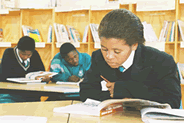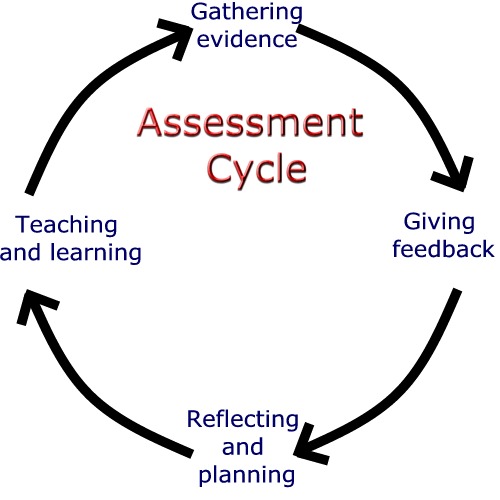Each education system has a primary focus for assessment. In some countries it will be learning outcomes
and in other countries it will be standards.
However, we also have a responsibility to develop a cross
curricular approach to assessment which includes numeracy and literacy, as well as a wide variety of life skills
such as collaboration, information management, higher order
thinking, communication, technology use and self organisation,
amongst others. Identifying the assessment standards on which to base
teaching and learning is the first step of an assessment cycle
that leads to the growth of learning and teaching through
feedback and reflection.
We do not only assess what learners write
or remember. We can assess the following kinds of output (once
again, to name just a few):
Written
|
Spoken/Heard
|
Visual
|
| story
letter
report
diary
reflective journal
logbook
essay
questionnaire
newspaper
notes
website
lyrics
programme |
oral
drama
role-play
conversation
interview
discussion
debate
radio programme
music |
picture
poster
painting
collage
chart
graph
decoration
photograph
video
model
sculpture |
What we assess is closely linked with how
we assess. Continuous assessment
and integrated assessment all serve to make us much more
aware tat assessment is not something that is tagged into the end of a unit of study. We should be aware
of the many processes and products of learning as well as
the need to include varied assessments that accommodate
the different intelligences that we typically find in our
learners. This all affects the methods of assessment that
we could use.
In this activity we will be focusing on
what we assess.
"It
is important that learning experiences in the classroom
be assessed in an authentic manner. The traditional
grading of papers still has a legitimate place ...but
should not be the sole means of assessing. Rather, continuous
assessment should mirror instruction and be interwoven
with it. Evaluation is vital for a clear, reliable picture
of how students are progressing and how well the methods
of instruction address students' needs. "
Saskatchewan Education.
(1997).
English Language Arts 10: A Curriculum Guide for the
Secondary Level.
The following extract from
the Saskatchewan Curriculum Guide uses the example of writing
and illustates how dialogue and reflection help learners
and teachers to continuously assess the process
of writing, before the final written product is
produced. In the following extract, notice the role that
reflection takes in the process assessment.
Click
here to read the extract on process assessment for writing.
Although this example refers
to language and writing, remember that writing is a cross-curricular
skill. However, it should be possible for you to understand
that there are many aspects of a process in any learning
area that can be treated in a similar way. As opposed to
process, one can also identify aspects of assessment of
a product. Let us follow the writing example through by
looking at another extract from the same curriculum guide.
In the following extract, notice how formative a product
assessment can be and also how the use of clearly expressed
criteria can assist with good feedback even when scoring
is used.
Click
here to read the extract on product assessment of writing.
There are many instances
of assessment throughout the learning process. Group work,
for instance, involves many processes while the group is
working towards developing a product. This provides opportunities
for the group to assess itself (peer- and self-assessment)
while the teacher can help the members of the group to develop
their group and social skills through constant monitoring
and feedback.
Tools such as project narratives
can be used for the learners to capture evidence of the
process of their thinking and discussion as a group or as
individuals. Click
here to see an example of a project narrative template (Word
document).



